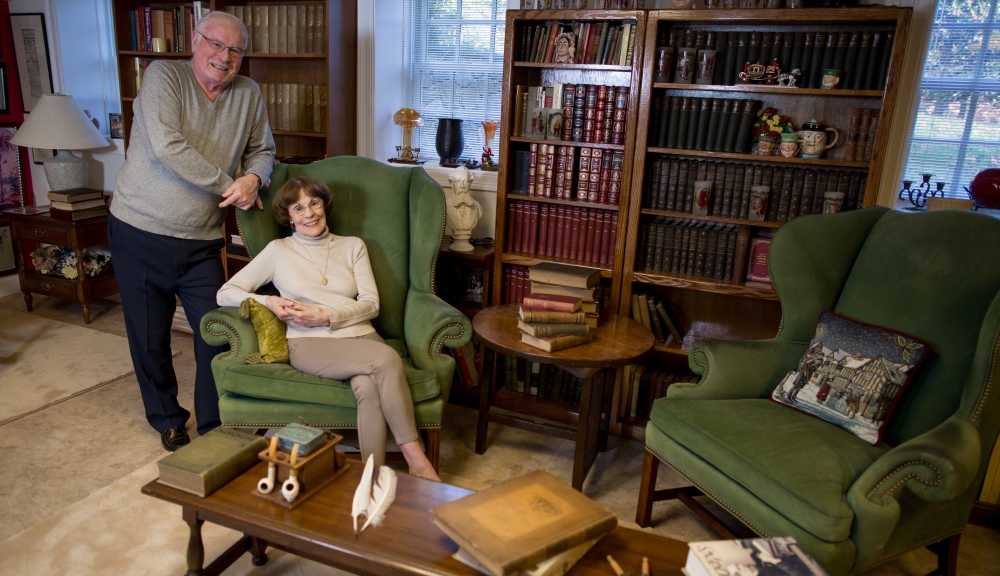Listen to a story about the WPI Dickens Digitization Project on The World, a daily news program from PRI, WGBH, and the BBC broadcast on more than 250 public radio stations and XM satellite radio.
Also, read technology reporter Clark Boyd's blog entry about the Dickens digitization project on the Discovery Channel website.
And, read a story about Charles Dickens quoting WPI's resident Dickens authority, Professor Joel J. Brattin, in the Investor's Business Daily.
WORCESTER, Mass.– December 10, 2008 – Charles Dickens is widely regarded as one of the greatest English novelists of all time, and his books continue to be enjoyed by millions of readers today, nearly 140 years after his death. But few modern readers get to experience Dickens’s novels the way his original Victorian audience did: in serial installments. Thanks to a project currently under way at Worcester Polytechnic Institute (WPI), that joy will soon be available to readers worldwide.
With a $30,000 grant from the Massachusetts Board of Library Commissioners (through the federal Library Services and Technology Act), the university’s Gordon Library is digitizing the original serial parts of all 15 of Dickens’s novels (150 parts, totaling 15,000 pages), including such well-known masterpieces as Oliver Twist, A Tale of Two Cities, and Great Expectations. Most of the serial parts belong to the Robert D. Fellman Dickens Collection, housed in Gordon Library. Some parts are in the collection of the Charles Dickens Museum in London, which is a partner in the digitization project. The project is expected to be complete by the end of 2010, in preparation for the worldwide celebration of the 200th anniversary of Dickens’s birth in 2012.
The digitized works will become part of the first complete online archive of Dickens’s serialized novels, which will be available to readers and scholars through the Web, notes Joel J. Brattin, professor of literature at WPI, noted Dickens scholar, and curator of the Fellman Collection. “Few scholars—and certainly very few readers—have previously had access to these rare serial parts, as they can be found in only a few collections worldwide,” Brattin says. “That’s unfortunate, as they reflect, more so than any other published text, the author’s original intentions as to wording, punctuation, and so on. Plus, by exploring these installments, readers are able to experience the novels—and a bit of Victorian London life—as their earliest readers did, complete with advertisements and with illustrations that are rarely reproduced in full in today’s paperback editions.”
According to Rodney Obien, curator of special collections and archives at WPI, the serial parts will be carefully scanned, and the resulting images will be saved as high-resolution PDF/A files (the standard for archival PDF files). Each PDF will be fully text-searchable, enabling users to search for words or phrases in the novel or the accompanying ads. Kathy Markees, conservation librarian at WPI, will enhance each file with metadata—facts about the history of the individual serial parts, their preservation, and so on.
Enabling scholars and general readers to experience Dickens’s novels in their original serial form will increase awareness for an underappreciated element of the novelist’s genius—his mastery of the serial form, Brattin says. “Dickens not only published his novels in serial parts, he wrote them that way, too—a rare and highly challenging accomplishment. To pull off this feat, he had to create parts that were enjoyable on their own, but that would add up to a compelling, satisfying novel.”
Brattin says it is fitting that a modern, democratizing technology like the Web is being employed to bring Dickens’s works to a wide audience, since Dickens himself helped usher in the era of mass-market publication in 1836 with the success of The Pickwick Papers, his first serialized novel. “Serialization, which really began with Dickens, coupled with innovations in printing technology, made literature affordable to a wide audience for the first time. Now, through this project, we are using the latest in electronic publishing technology to make it possible for the world to rediscover the joy of reading and appreciating this master of the novel.”


